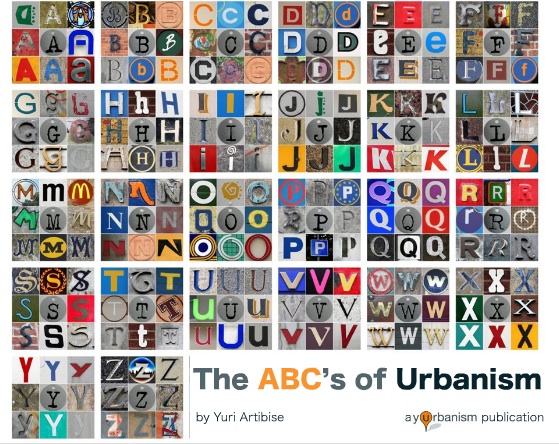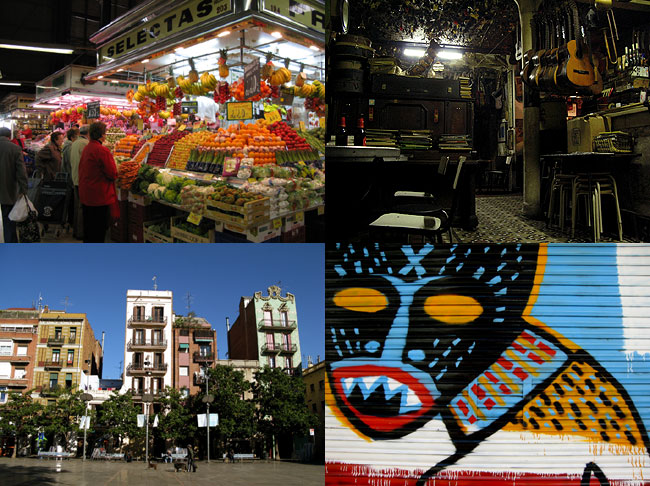Has the Concept of “Urbanism” Lost its Mojo?
Kaid Benfield thinks so (see here and again here). He believes the word “urbanism” is overused and, consequently, stifling creative thought about cities and their planning. He thus joins vocabulary policemen like Thomas Frank who’d like to purge other words—specifically, “vibrant”—from the planning lexicon. Benfield says:
…as a lover of words and language, I am always thinking about their meaning and best use. And I now believe it may be time to send “urbanism” to the same literary retirement as “vibrant.” …My first problem with urbanism is that in some circles it has taken on the air of a cult, providing a verbal badge of identification. The word carries an assumption not just that adherents love and promote cities but also subscribe to a growing code of written and unwritten precepts and rules about how our built environment should be organized – starting but not ending with density, gridded streets, mixed uses, priority to pedestrians rather than drivers, and so on. …Just as the principles of smart growth have gotten stale, so have the overlapping principles of urbanism. Overly familiar vocabulary can lead to overly familiar thinking.
But perhaps an even bigger problem with “urbanism” is that the word is ridiculously overused. … It comes in a bewildering variety of forms – old, new, sustainable, tactical, landscape, pop-up, accidental, adaptive, emergent, Latino, recombinant, magical, integral, green, military, “true,” everyday, postmodern, guerilla, mobile, even an oxymoronic “agrarian” strain, and more. Various versions of the label are used to justify everything from illegally spray-painting public property to development in places that no sensible person would honestly consider “urban” unless they have drunk gallons of metaphorical Kool-Aid. I could define urbanism in my own way and probably be perfectly comfortable with the result. But communication is about using words in ways that are not just personal but understood in common, and this one has now splattered all over the map, including in ways that I find troubling.
I like several parts of Benfield’s argument, and I love Frank’s argument with respect to “vibrant.” I agree that vocabulary is important and that we need to be precise in our use and vigilant about other uses. I also agree that inter-subjective agreement about the meaning of words has value given that city-building is a collective undertaking. But Benfield’s complaint seems to be with a particular strain of urbanism, New Urbanism. I’m sympathetic to his critique of New Urbanism at the same time that I support the Congress’s work to keep tweaking that which is considered “New.” I also find the many other contributions to urbanism that Benfield mentions to be interesting and useful. The various urbanisms that compete for the hearts and minds of city-lovers privilege different entry points to seeing and bettering the city. Comparing these variants allows one to take the measure of their underlying theories, epistemologies, and practical consequences. Comparison helps clarify their distinguishing features and emphases, the possibilities for synthesis, and the irreconcilabilities. It identifies contradictions and blind spots in our thinking and inspires new thought about how to resolve the contradictions and fill the blind spots.
The concept of urbanism is essential to our vocabulary if it’s also understood as a process rather than a product. If we’re looking for words to jettison, urban planning—a word that Benfield doesn’t recognize as problematic—might be the better choice. I’m struck by the distinction between urban planning and urbanism that’s made by Barcelona architect and City Councillor Itziar Gonzàlez. Jeb Brugmann describes Gonzàlez’s distinction in the chapter on Barcelona’s Gràcia District in his book Welcome to the Urban Revolution: How Cities are Changing the World. For Gonzàlez, urban planning:
…starts from the premise that “we want to reach this goal.” Urbanism, in contrast, asks “how do we reach this goal?” [Gonzàlez] draws a picture of a boat on a large sheet of paper. Then she shows the boat being buffeted by strong winds, just like the pressures a city faces during its redevelopment, which threaten to push its vision off course. “To reduce the pressure of the winds on the boat,” she argues, the planner makes the boat bigger and bigger. In other words, the project becomes less responsive to local values and priorities. It increasingly focuses on the needs of the boat. In contrast, she explains as she continues her paper illustration, ”urbanism is adding and developing solutions for all the different interests.” She draws each interest as a little boat. “Urbanism is getting lots of little boats moving in a similar direction.”
Regrettably, for Gonzàlez, urban planning still substitutes for urbanism in Barcelona. And probably elsewhere as well. The challenge to urbanists working towards revitalization or regeneration in any city is to get an accurate assessment of “little boats” and their implications for designing the built environment. That’s why I especially like the work of folks who are dedicated to thinking about a specifically intercultural urbanism, as well as those invested in Latino, Everyday, and other urbanisms that put diversity first. They focus on identifying and working with different interests instead of assuming they don’t exist, ignoring them, caricaturing them, or declaring that they don’t matter because they’re outnumbered by a dominant majority interest. We need to understand, accommodate, balance, and integrate majority and minority interests if we’re going to build better, more livable neighborhoods and cities. And I think we already have some pretty good concepts for achieving that goal.



Leave a Reply